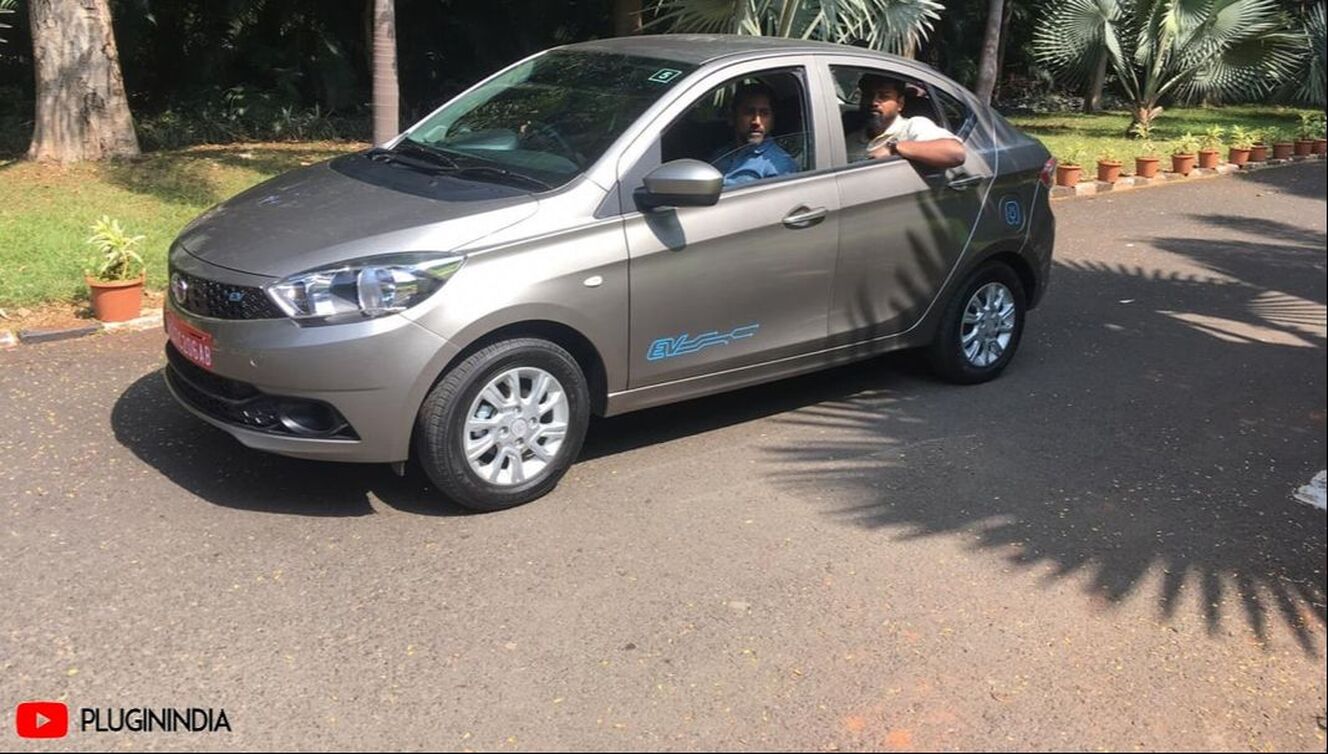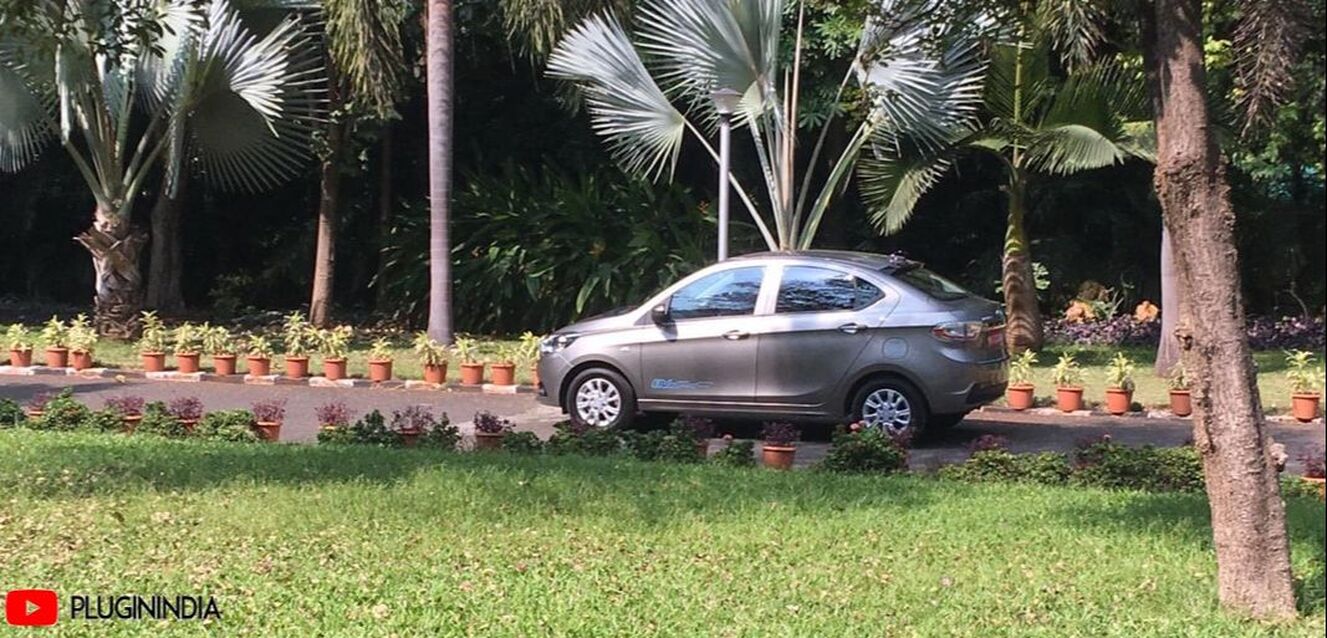The episode reminds me of the story, of the demented guy who goes to a town and places an order with the carpenter, who in turn goes on to celebrate by enriching the baker - etc - and in general the town gets back its economy. Later on, the carpenter realises that the order was a spurious one, but by then it doesn't matter - the velocity has come back in circulation in the economy, and as the 3 idiots would say, all izz well. Like the madman in the above tale, EESL realised that they had goofed up on the specs - and decided that the best way to save face was to postpone accepting deliveries. And so here was Tata Motors, who had spent big bucks on developing the Tigor EV, wondering what to do with the Tigor EV.
With BS 6 coming in Apr 20, most car companies are suddenly going to be finding diesel going out of fashion. The urea tanks required in diesel cars to meet NOx emission standards are not really endearing themselves to car owners. So now is a good time for companies to start offering the electric drivetrain as an option to petrol. Of course, at double the price. There is more logic to this move than that. Given the dismal volumes in India for EVs, it makes sense to spread the fixed cost of vehicle development - R and D, sheet metal dies, homologation et al - over larger number of vehicles. This way, you can have EVs that don't burn the trousers along with the consumers' pockets. Platform sharing looks to be the way forward for everybody.
The easiest way to do a heart transplant in a petrol car, is to use the engine space for the motor and associated electronics - and the space for the fuel tank for the battery. And this is exactly what Tata has done. Tesla has its battery pack running all along the floor, but then Tesla is a ground-up EV. Interestingly, the bigger battery surface area of the Tesla also presents a fire hazard - as there have been incidents where Teslas have flamed up by pieces of metal lying on the road. The new Tigor gets a 22 kWh battery, which is up from the 16 kWh one earlier. The 30 kW motor does an adequate job of handling normal urban traffic. The battery is a prismatic LFP pack.
Heart transplants come with their own side effects. What a petrol car DNA engineer still does not understand, is how important the battery, aka fuel tank, in an electric car is. Imagine designing a Tigor sized car with a scooter fuel tank - this is the situation with EVs today. And in such a situation every drop counts. So efficiency is the name of the game - and not the brute force effectiveness - which Tata's ERC has been used to, in their more than 50 years of engine building. The first rule of efficiency is to travel light. I roam around the county with a backpack - and the length of the trip does not matter - as long as I get to do my laundry everyday. On the same lines, frugality has to be the DNA with EV design. How to get the most out of every Watt-hour of energy stored in the battery. And we hope that the Nano lessons of frugality have not been forgotten by the Tata Motors team.
Here are the low hanging fruit for upping efficiency. Low rolling resistance tyres, which are a wee bit over inflated to get more juice out of the battery pack. TML team informed us that the tyres do have lesser resistance - but I could not see the Toyota Prius kind of treads in them. The air conditioning requires about 4 kW power. For a 75 kW petrol car it is just 5% of output, but for an electric it is more than 10%. The same cooling unit also has to do a job of cooling the battery pack - and this is important - as batteries do not like being on the wrong side of 40 degree Celsius. The difference in inside temperatures in white car parked in the sun, when contrasted to a black one parked for the same number of hours, can be as much as 5 degree Celsius. No wonder, most Tigor Electrics sold are white. My advice to future EV buyers would be, no matter what the color of your money, but let your EV be white!
- Battery Pack - 215 kg
- Motor and drive train - 85 kg
- Body Shell - 300 kg
- Steering and Suspension - 150 kg
- Seats, Dashboard et al - 150 kg
- Electronics and cabling - 150 kg
- Air conditioning and Cooling - 100 kg
- Tyres, including stepney - 80 kg
The easiest thing in weight is to get rid of the spare tyre. Not joking! The Mahindra E2O was actually sold in European markets without a spare wheel - and the frunk (the front boot) actually had a fish basket. And to boot - the Tigor owner would also get more boot space. But coming back to heavier issues - the exterior panels are the most expensive - and it would not make sense to touch them. But the inner sheet metal can be looked at. With lesser load in the engine compartment, there could be some weight saving possibilities there. Since the car runs smoother, and would typically not be a rural off roader, there can be more weight savings in the suspension too. I believe TML is working on reducing weight in the cab area - we believe that the seats of the newer Tigor are lighter. What prevents more investments in weight reduction is the uncertainty about volumes. Group chairman Chandra is ready with investments, proviso to sales happening. Chicken and egg. The target should be to get the Tigor weight down to less than a ton.
The other variable that plays a decision in car buying, especially EVs, is initial cost. The running cost at 1 Rupee a km is a wow element. But the initial spend of 13 lakh + is a dampener. The greens would love this price - and the good news for the greens is that the car is now available for individual owners. However, with FAME subsidies not being given to individuals, it would be a good idea for innovative accountants to come up with financial jugaads which can give company owners the cloak of becoming a fleet owner - and get the subsidy. We don’t really expect TML to endorse this conduct, which is on borderlines between good and bad ethics. But the ethical problems would get sorted out when a fleet owner leases the cars to individuals or companies. The other advantage of leasing an electric is that it de-risks the owner, as she does not have to worry about maintenance. My advice to TML would be to start the leasing service itself. Why let aggregators take away a market - and make a commodity out of automobiles. The trust in the Tata brand will make a lease from Tata easier for consumers to buy. Till date, commercial banks have been scared of lending loans for EV purchases, not being too sure of what the residual values of the cars are going to be. Auto manufacturers now need to put money where their mouth is - and tell consumers by their actions about the trust they have in the vehicles they are building. We have seen that happening with Revolt in the electric motorcycle space - and the excellent response it has received from the market. Time for an encore in cars, TML!
Jugaad aside, most of our desi sensibility loves seeing more green in the pocket than outside of it. The battery pack is the biggest cost driver of EVs. My guess is that we are looking at battery energy storage costs of about 500 $ per kWh. So there goes 11,000 dollars or Rs. 8 lakh straight. Battery swapping has potential to lower this cost. If swapping can happen in the same time that a fleet driver spends at a CNG pump, then we are good. We will still need a real life range of 100 km - as we expect a fleet owner to drive around 200 km a day. The government can be a huge enabler over here. The imperative in battery swapping is standards. And here is where the babus seems to have adopted a wait and watch model. Even simpler stuff like charging ports have not been standardised - as the babus wait for the more developed nations to literally, take charge.
In the good old days of petrol cars, the Americans would offer huge number of engine options. Maybe the time has come, to offer a huge number of battery options in the Tigor EV. Batteries, being modular, work on a different paradigm. Economies of scale happen at the module level. And again, if companies get together to define these standard modules, everyone stands to win in this cooperative-competitive game. Most individuals and small fleet owners would not be investing in the high current fast charging infrastructure. It takes 11 hours to do a full charge with slow charging for the Tigor EV. A kind of boundary line for overnight charging. One shudders when one thinks of the 18 hours it takes to charge the 35 kWh Hyundai Kona on slow charge. But then with a 452 km range (ARAI figure), you can do a charge every Sunday. One more option that can be offered in the Tigor EV is without ability for fast charging. Am sure it would shave off a lakh from the price. And now that I am on it, my suggestion would be to shift the slow charging port to the side - with a lot more space to pull out jammed charging ports. Like in Volvo buses, you can have hoses that go into the fuel tank from both sides, the company can look at having the slow and fast charging ports on either side of the vehicle - in the same slot as the fuel tank flap. Combined with a lower battery size, the magic figure of sub 10 lakh could be reached for the personal car user.
To end; would I buy this car? Hmmm... Real life range is about 150 km. Now for E2O users who have lived with 100 km range, not to mention Reva users who lived with 60, 150 is definitely a step up. If we look at typical urban drive cycles, most are less than 100 km. So in a sense, the Tigor will meet your week day needs. So if you are already an E20 user, who has found the E20 to be fitting in your drive cycle, and there is another ICE car in the garage, then do test drive the Tigor ASAP; this could be a good E20 replacement. But if the EV is going to be your single car, and you plan to do long drives on weekends, range anxiety can happen. A little bird tells me that the Tata Nexon EV launch is only a few months away. And with a price differential of a few more lakh - and a range difference of more than a hundred km - weekend drivers, wait and watch!


